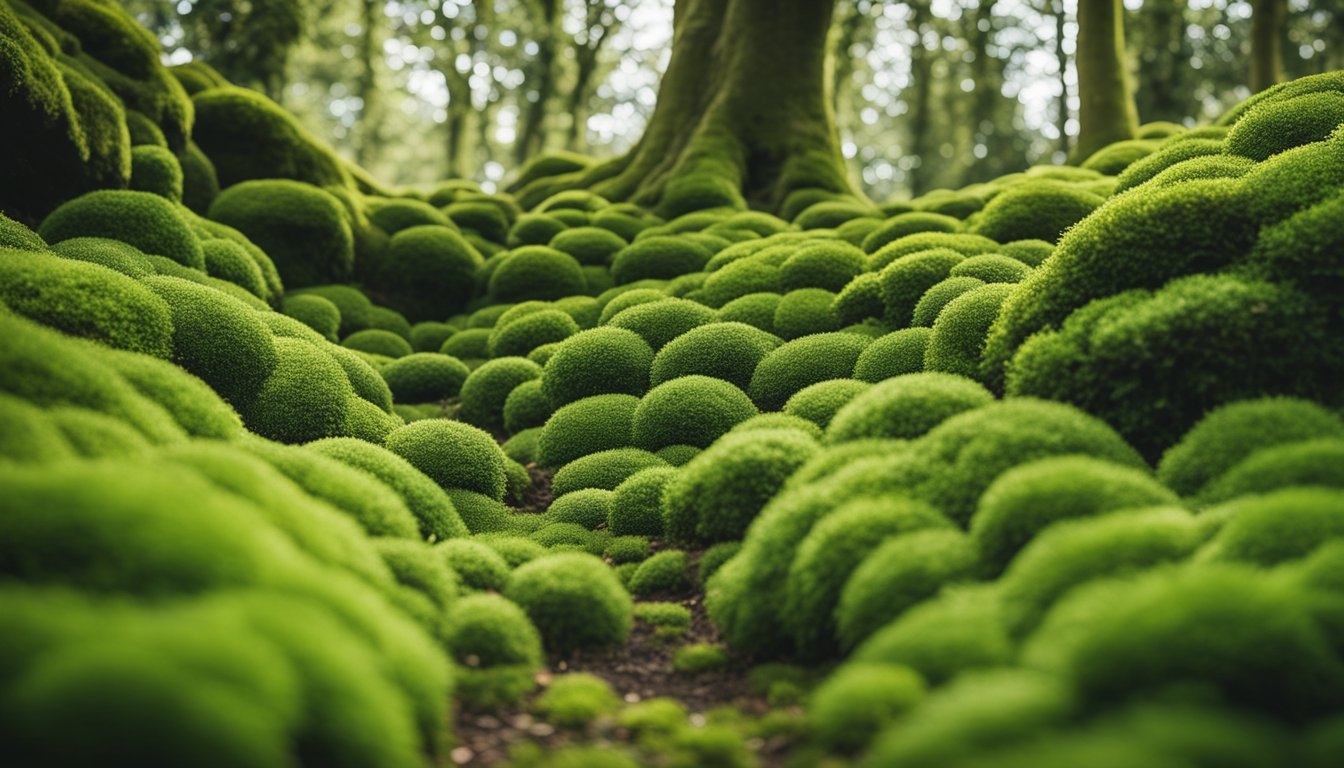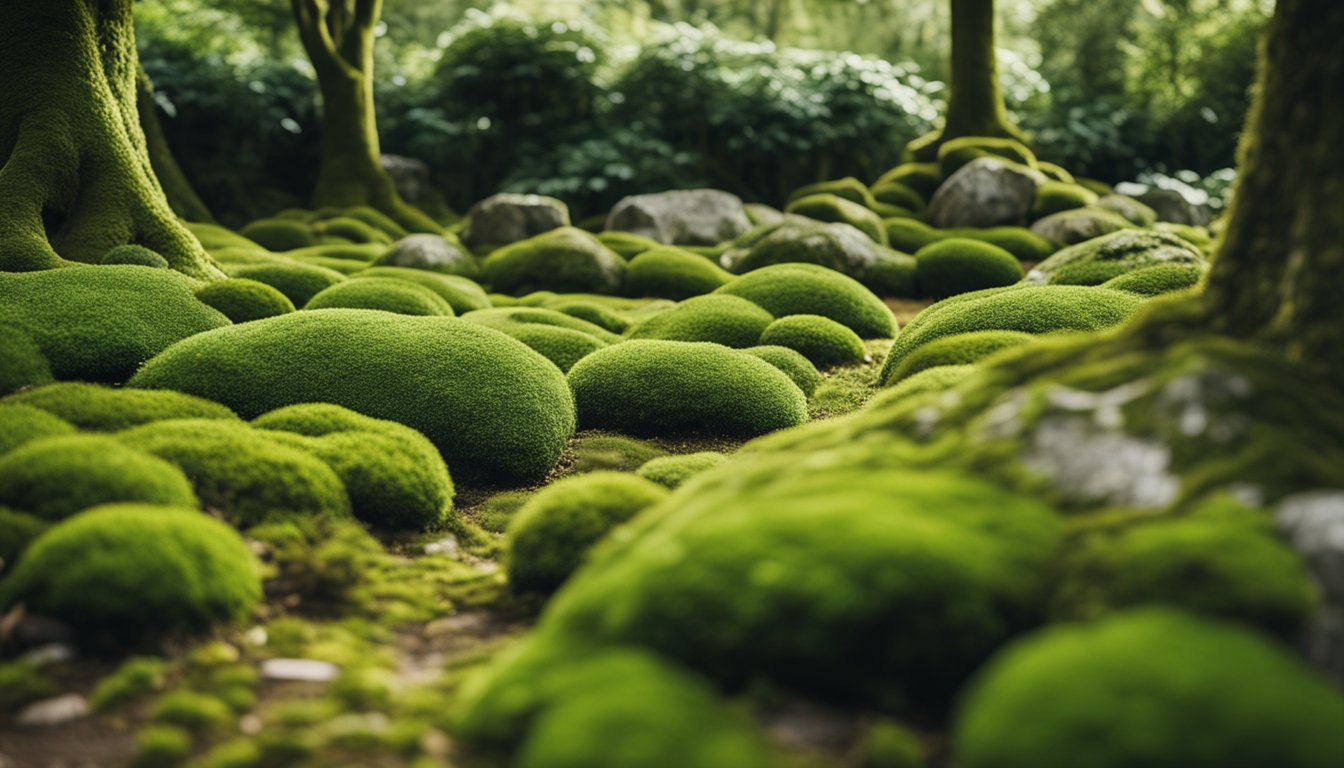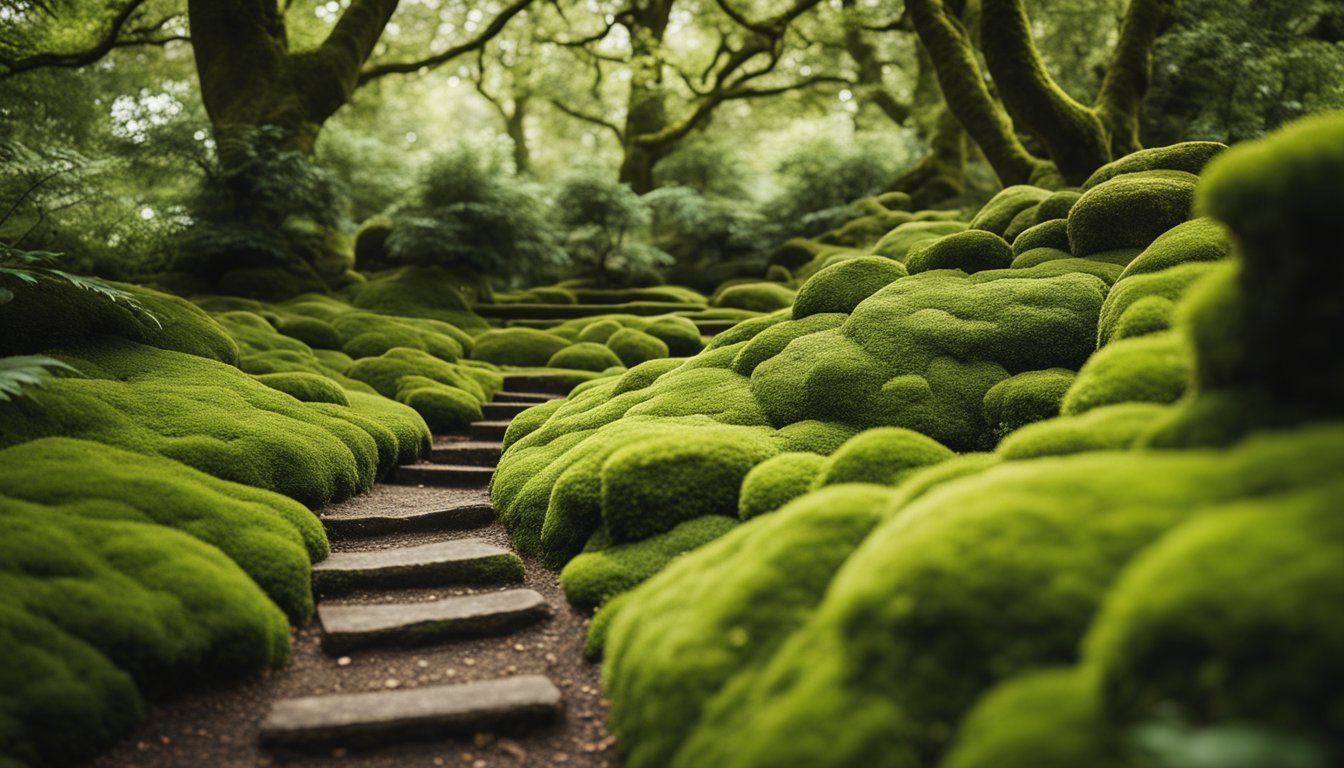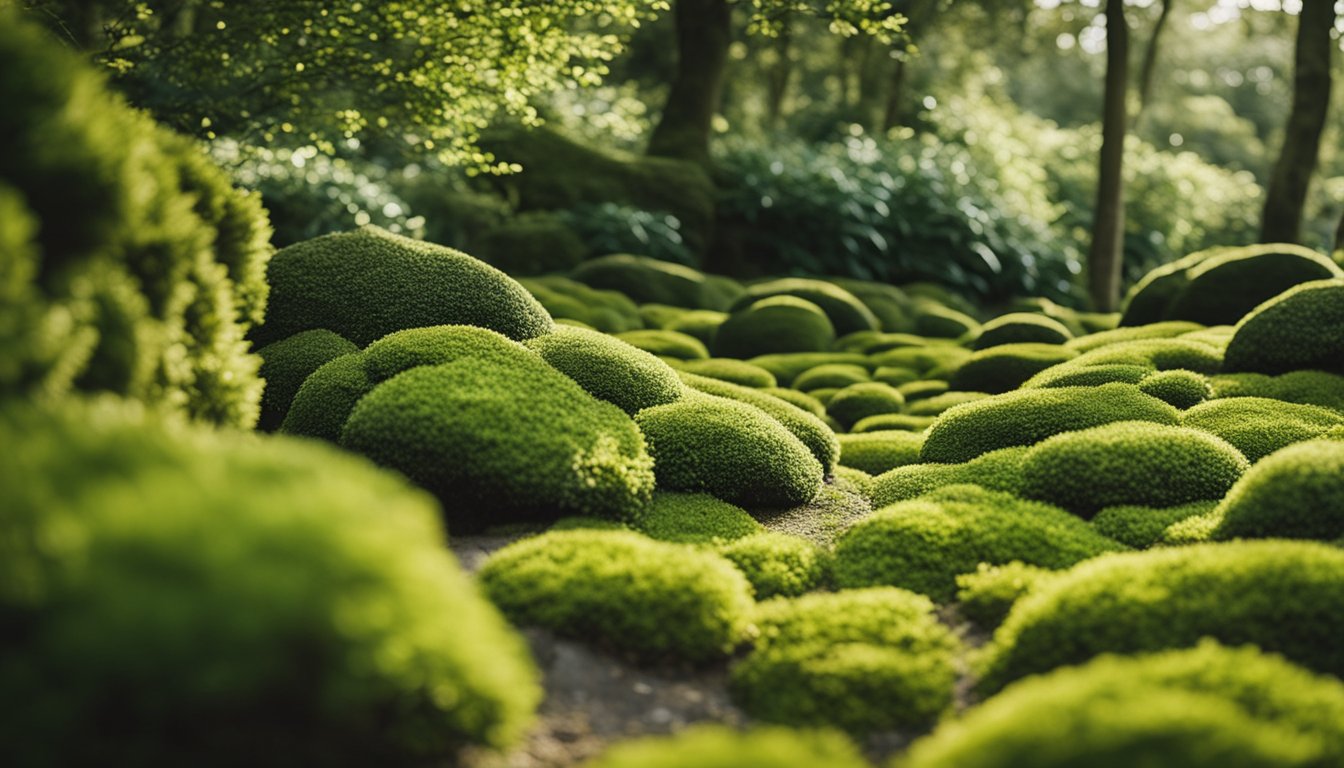Late updated: 27 Nov 2024 11:11
Written by: Emily Thornton
Incorporating Native UK Moss Into Your Garden Design: Tips for a Lush Landscape
Incorporating native UK moss into your garden design can transform your outdoor space into a serene, lush retreat that benefits both aesthetics and the environment. With its ability to thrive in shady areas, moss offers a unique green hue throughout the year, adding a touch of timeless beauty to any garden setting. Moss not only enhances the visual appeal of your garden but also helps in reducing soil erosion and improves air quality, making it a valuable addition.

Moss gardens require minimal upkeep once established, as mosses are hardy plants that need little attention beyond the right moisture levels. This low-maintenance aspect, combined with their versatility in design, opens up creative possibilities for gardeners eager to work with nature’s own resources. From ground cover to adornment on stones and logs, moss brings a soft texture that complements any garden structure.
Successful moss integration depends on understanding its natural habitat and the specific conditions of your garden space. By carefully selecting suitable varieties and creating an inviting environment, we can establish a harmonious blend of flora that not only thrives but tells a story of nature’s quiet resilience and beauty.
Key Takeaways
- Moss enriches garden design with beauty and environmental benefits.
- Low maintenance needs and versatile design applications.
- Importance of choosing appropriate moss and conditions for growth.
Fundamentals of Moss in Garden Design

Incorporating native UK moss into garden design presents both visual and ecological benefits. These plants are low-maintenance and environmentally friendly, enhancing both aesthetic appeal and biodiversity.
Understanding the Role of Moss
Moss plays a critical role in garden ecosystems. As bryophytes, they thrive without flowers or seeds, drawing nutrients directly from the air and rain, which makes them eco-friendly and sustainable. They offer excellent ground cover, aiding in moisture retention and reducing soil erosion. Their dense carpets are visually appealing, adding rich textures and hues to various garden spaces. By promoting biodiversity, moss supports a diverse range of insects and microorganisms, crucial for a healthy local ecosystem. Understanding its ecological importance is key to effective garden incorporation.
Selecting the Right Moss Species
Selecting moss species tailored to specific garden conditions optimises their growth and impact. Commonly used types include cushion moss, known for its resilience and softness, and sheet moss, which spreads to cover extensive areas. It's essential to choose species native to the UK to support local ecosystems. Compatibility with existing garden features is important, ensuring that chosen species enhance the landscape without competing with dominant plants. Consulting local experts or resources can guide us in selecting species that are both beautiful and supportive of surrounding biodiversity.
Site Conditions and Preparation
Preparing the site for moss cultivation involves understanding the preferred conditions of these versatile plants. Mosses typically thrive in shaded environments with consistent humidity. Soil preparation is vital, as they grow best on well-drained, slightly acidic substrates. Ensuring proper moisture retention involves maintaining regular watering schedules and monitoring soil health and temperature. Reducing competition from other aggressive plants is also crucial to preserving moss quality. With careful site assessment and preparation, mosses can flourish, offering both a natural beauty and ecological contributions to our gardens.
Designing with Moss in Mind

When considering integrating moss into garden design, it's essential to explore its adaptability within existing layouts, potential for new features, and contribution to sustainability and erosion control. These elements can significantly enhance any outdoor space.
Integrating Moss into Existing Garden Layouts
We can seamlessly incorporate moss into existing garden layouts by utilising its natural affinity for shaded areas and moist environments. Moss, acting as a natural ground cover, provides an alternative to traditional lawns, requiring minimal maintenance and offering a lush, green appearance even in shaded areas.
Pathways through rock gardens or adjacent to a pond can be lined with moss mats to create a serene atmosphere reminiscent of Japanese gardens. Additionally, moss integrates well with shade-loving plants, enriching the garden ecosystem while softening hard landscaping features with its lush texture.
Creating New Features with Moss
Creating unique features with moss opens up numerous creative possibilities. Living walls made from various moss species can bring vertical interest to our outdoor spaces. These installations are not only visually appealing but also contribute to improved air quality.
Furthermore, establishing a dedicated moss garden or incorporating moss into water features can turn areas of the garden into tranquil retreats. By using rock cap moss or other suitable varieties, we can line the edges of pools or streams, thus enhancing their natural look. Incorporating seating areas nearby allows for peaceful enjoyment of these green landscapes.
Enhancing Sustainability and Erosion Control
Moss plays a crucial role in promoting sustainability and controlling erosion. Its ability to thrive in low-light and nutrient-poor conditions makes it an ideal choice for improving difficult areas of the garden. Moss efficiently retains moisture, thus reducing irrigation needs, and acts as a natural sponge in rain-heavy regions.
In areas prone to soil erosion, moss provides an effective stabilising matt due to its dense carpet-like structure. By encouraging moss growth on slopes or unstable patches, we enhance the garden's resilience against weather-induced erosion. This not only supports the local ecosystem but also contributes to sustainable gardening practices.
Frequently Asked Questions

Incorporating native UK moss into garden design offers unique aesthetic and environmental benefits. There are practical methods for integration and cultivation, both outdoors and indoors.
What benefits does moss provide to garden landscapes?
Moss brings several advantages to garden spaces. It provides a lush and verdant appearance while being low maintenance. Moss aids in soil erosion control and supports moisture retention. Furthermore, it contributes positively to biodiversity.
How can one effectively integrate moss into an outdoor garden design?
To successfully incorporate moss, ensure that you prepare the soil adequately. This involves clearing the area of debris and loosening the soil lightly. Consider placing moss in shaded or damp locations, as these conditions support growth and sustainability.
Where is the best place to position moss in a garden layout?
Ideal spots for moss include shaded areas under trees or between rocks where other plants may struggle. Moss thrives in environments with consistent moisture and minimal direct sunlight. Surfaces with rough textures, such as stone or bark, also help moss anchor successfully.
What are the considerations for choosing moss as a ground cover in full sun environments?
When using moss in sunny locations, irrigation becomes essential to maintain necessary moisture levels. Selecting sun-tolerant moss species, like some Polytrichum varieties, can improve survival rates. Protective measures for the hottest parts of the day might also be warranted.
How does one cultivate moss in an indoor setting?
Indoor moss cultivation requires attention to humidity and light. Place the moss on a suitable substrate and maintain high humidity, perhaps with a small humidifier. Filtered natural light or low-intensity artificial light ensures moss remains healthy without drying out.
Can moss play a beneficial role in container gardening, and if so, how?
Indeed, moss can enhance container gardens as both a decorative and functional element. It acts as a moisture-retentive layer atop pot soil. Furthermore, moss visually softens the edges of containers, blending them into the garden landscape more harmoniously.
